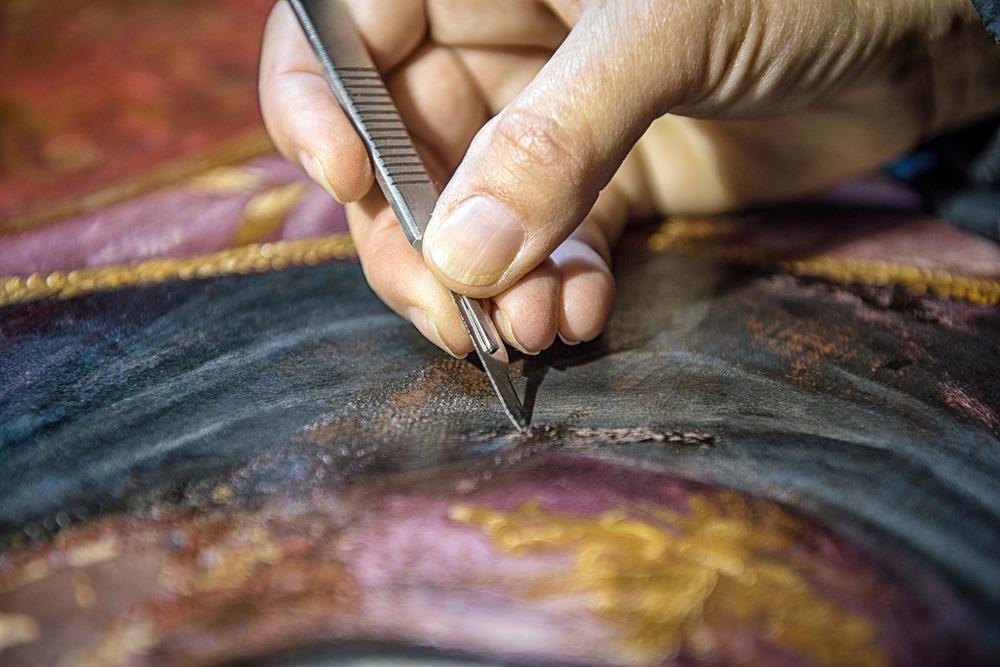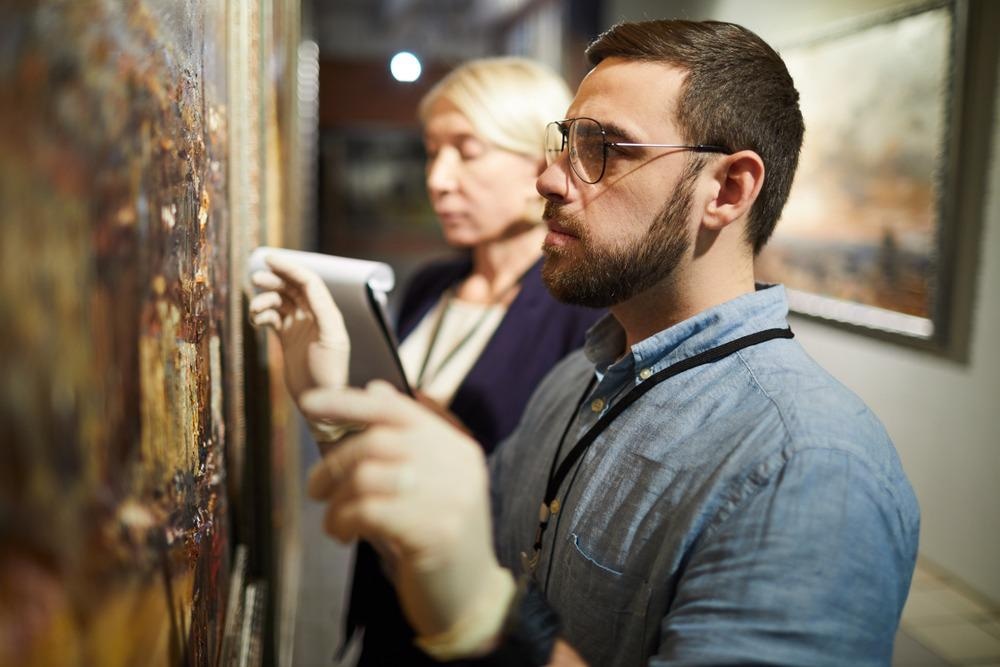For many years, the study and conservation of the materials and paints used in works of art have been an active research domain among museum curators, scientists, and conservators worldwide. Over the centuries, the employment of a wide variety of materials (organic and inorganic, natural and synthetic) by artists along with the continuous development of their painting techniques present a variety of challenges when analyzing their works. Similarly, the spreading of fakes and forgeries in the art market makes artwork authentication a significant challenge.

Image Credit: Francesco Cantone/Shutterstock.com
In the last century, there has been ever-growing interest in the preservation of our cultural heritage objects, such as paintings, sculptures, and other art. Modern multi-analytical methods, including X-ray photoelectron spectroscopy (XPS), attenuated total reflectance mode Fourier transform infrared spectroscopy (ATR-FTIR), multispectral imaging, and scanning electron microscopy coupled with energy dispersion spectroscopy (SEM/EDS) enable art owners, conservators, museums, and dealers to extract valuable information necessary for pre-conservation diagnostics and authentication of valuable paintings.
Besides, such multi-analytical tools are indispensable when evaluating novel conservation treatments and their effect on the internal structure of the paintings.
Artworks with Complex Layered Structures
A painting is an art form represented by an image made with various pigments layered on a supporting material. This supporting layer is the base of the painting and serves to protect it from mechanical impacts and damage. Various materials may serve as support if they have enough durability. These may include rock, paper, fabric (canvas), metal, plaster, and others.
A typical painting contains several layers. The ground layer serves as an interface between the support and paint layers. This layer is usually made of gesso, a chalk-containing compound, forming a smooth surface suitable for paint application.
The paint layers contain the most information about the composition of the painting. The artistic paint is a mixture of finely powdered pigments (responsible for color) and matrix material (or binder) holding the pigment particles together. The pigments can be organic or inorganic compounds found in nature as minerals or prepared artificially. Among the most used binders are walnut, linseed, poppy seed oils, and tempera (egg yolk). In addition, paints may also contain diluent agents to make the paint spread more uniformly and to adjust its transparency to the desired degree.
The top varnish layer is transparent and serves to protect the outer layers of the painting or enhance the visual perception of the paint layers underneath. The varnish is usually made of natural or synthetic resin.
Limitations of Non-Invasive Characterization
The complex layered structure of the paintings together with the diverse materials used by the artists make the characterization of such artworks a real challenge. In recent years, experts have developed multi-analytical methods that combine various non-invasive and invasive techniques for the characterization of such layered specimens.
The non-invasive characterization usually relies on a combination of techniques such as ultraviolet (UV) fluorescence, infrared reflectivity (IRR), and energy-dispersive X-ray fluorescence spectroscopy (EDXRF). The obtained information can provide details regarding the artistic technique used to create the painting, pigment distribution, and the characteristics of the top-most layer of the painting (for example, the presence of a non-original varnish).
However, the non-invasive diagnostics cannot answer questions related to the stratigraphy of the painting and the chemical composition of the materials used by the artist. Nevertheless, the non-invasive characterization stage can reveal hidden defects and greatly facilitate the selection of suitable sampling areas for further analysis.
Revealing the Artist's Signature through Chemical Composition Analysis
Accurate elemental analysis can be obtained via micro-invasive spectroscopic techniques like XPS, ATR-FTIR, and SEM/EDS. In this case, the characterization is performed on microscopic cross-sections extracted from specific areas of the painting. These spectroscopic techniques can detect the presence of certain elements (such as metal ions, silicon, phosphorus, and others) and confirm the use of certain pigments by the artist (for example, iron-containing Prussian blue or chromium-containing chromium oxide green).

Image Credit: SeventyFour/Shutterstock.com
The spectroscopic data can be compared to some previously documented data (such as spectra database or historical records about pigment manufacturing and availability). Thus, based on the organic and inorganic materials identified in the cross-sections, a timeframe for the painting creation can be established.
Furthermore, the results can reveal similarities between the pigments and the binder used in a painting and other known artists’ palettes and techniques, enabling experts to ascertain the authorship of the artwork. This is particularly relevant to 20th-century art, where the great variety of materials used, and the continuous technological evolution, often prove challenging to establish compatibility with the artists’ techniques.
Multi-Analytical Approach Improves Artwork Conservation
The multi-analytical characterization can also guide experts when evaluating novel cleaning and conservation treatments via the characterization of surface contaminants and degradation products and their selective removal. Most modern environmentally friendly cleaning methods are tuned for best performance and a good degree of solubilization while guaranteeing a selective removal of the aged varnish through multi-analytical characterization of the cleaning process. Such cleaning agents represent an alternative to the more toxic organic solvents that are still used in the conservation field, enabling the safeguarding of human health, artworks, and the environment.
More from AZoM: The Use of NDT in Archaeological Analysis
References and Further Reading
Macchia, A., et al. (2022) Multi-Analytical Investigation of the Oil Painting “Il Venditore di Cerini” by Antonio Mancini and Definition of the Best Green Cleaning Treatment. Sustainability, 14(7), 3972. Available at: https://www.mdpi.com/2071-1050/14/7/3972
Wiggins, M.B., et al. (2019) Multi-Analytical Study of Copper-Based Historic Pigments and their Alteration Products. Applied Spectroscopy, 73(11),1255-1264. Available at: https://journals.sagepub.com/doi/10.1177/0003702819856606
Gavrilov, D., et al. (2014) A review of imaging methods in analysis of works of art: Thermographic imaging method in art analysis. Canadian Journal of Physics, 92(4), 341-364. Available at: https://cdnsciencepub.com/doi/10.1139/cjp-2013-0128
Disclaimer: The views expressed here are those of the author expressed in their private capacity and do not necessarily represent the views of AZoM.com Limited T/A AZoNetwork the owner and operator of this website. This disclaimer forms part of the Terms and conditions of use of this website.